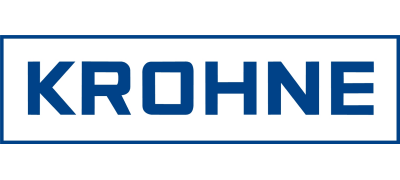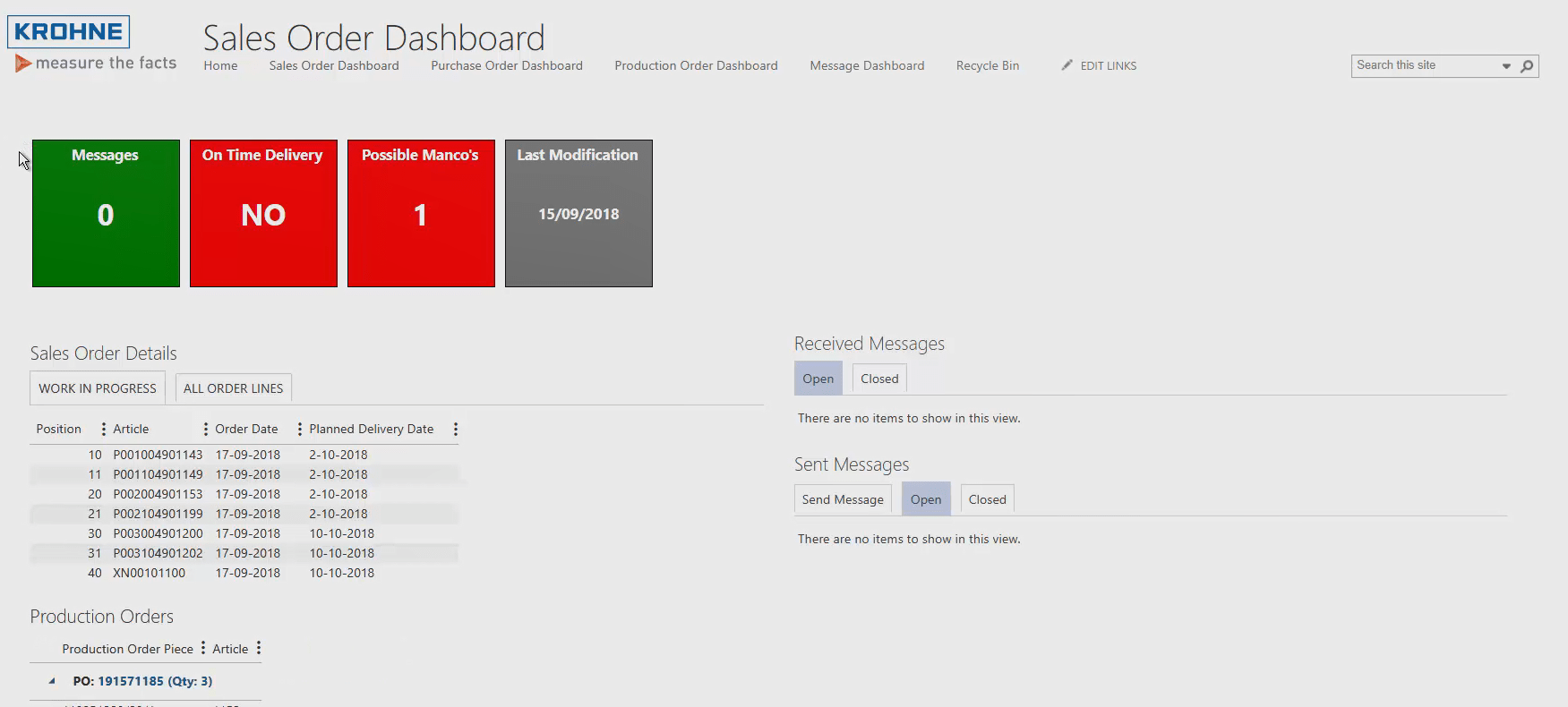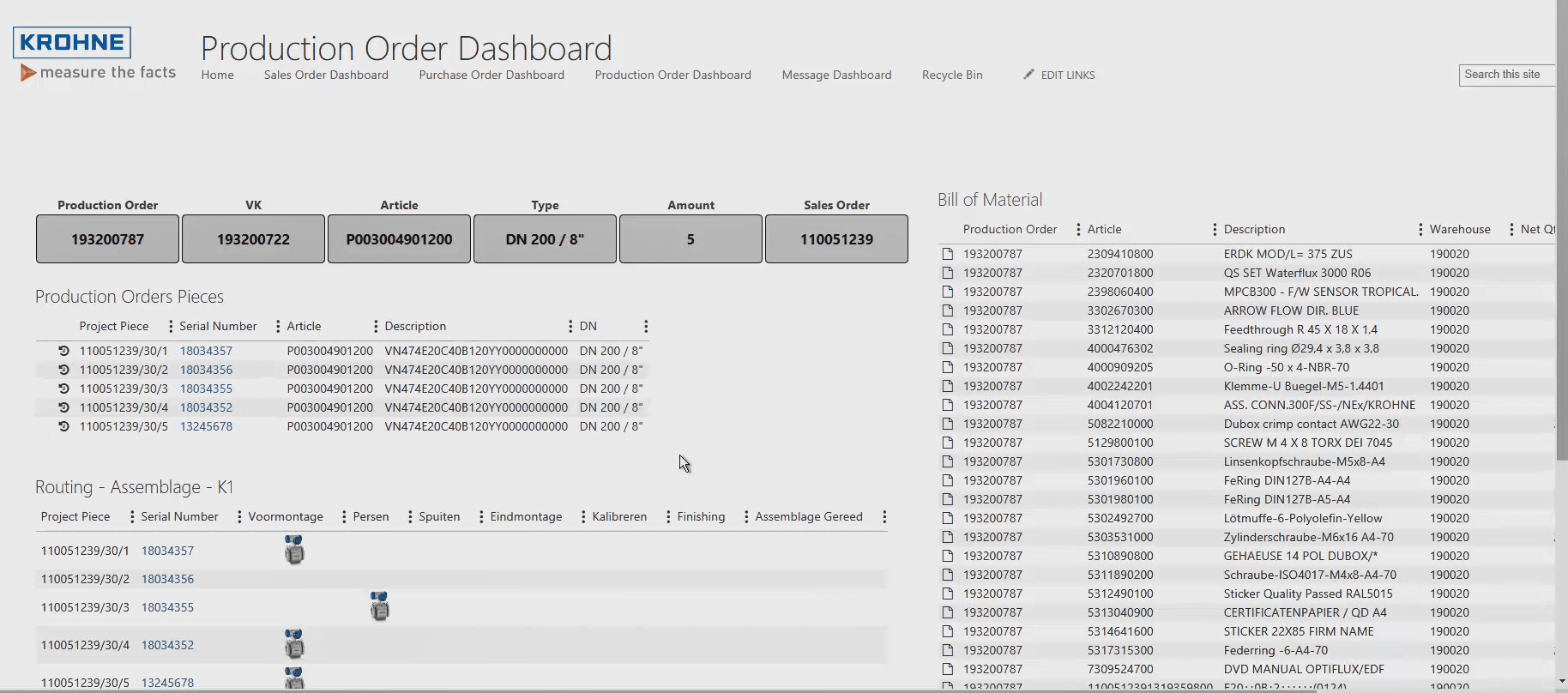
Who is KROHNE?
Even though KROHNE Group production sites are fully digitised, until recently all the data was confined in separate silos. Since all those systems could not be synchronised, it was not possible for the manufacturer of industrial instrumentation to have an overview of the data and real-time information. After two years scouring the market for the right partner, the Group eventually found Ometa: “They built a booking.com for the industry.”
KROHNE Group designs and manufactures high-tech industrial process measuring instrumentation. The solutions are marketed in many sectors, from oil and gas extraction to water purification or the food industry.
Operations Manager Leon de Borgie: “The entire product development takes place in R&D centres located in the Group’s so-called lead factories in the Netherlands, France, the United Kingdom, Sweden and Germany.” In addition, the Group has 12 production sites worldwide, including in China, the United States and Russia. They manufacture the products developed in the lead factories.
No overview or real-time information
Leon de Borgie: “Every KROHNE site is fully digitised. We keep data in our systems and databases for every product that rolls off the production line. Until recently, however, these systems could not communicate with each other. For example, if a customer inquired about the status of his order, our sales rep might have to contact four or five different colleagues to track that order. Same story whenever a change or update had to be made to a product after ordering.”
Long story short: nobody had a bird’s eye view and the teams were sometimes overtaken by events. Leon de Borgie: “Our employees could not rely on real-time information for their work. This was due to the fact that we had to extract bits of information from each separate system and then use the data to put together a complex jigsaw puzzle. We urgently needed to get rid of this outdated working method to make our sites future ready and streamline the exchange of information between them.”

Planned situation vs actual situation
Thanks to graphical displays, you can trace up production status up to single production part level. We consider each individual product (‘piece’ or ‘part’) as a case. Each case contains all linked sales order data, production order data, drawings, quality information, supplier details, and so on. All this information comes from different underlying systems and is brought together in one digital overview.
Integrated portals give Krohne a clear insight into the planned situation. The platform enable the company to compare this in real-time with the actual situation on the production line. This gives Krohne the opportunity to intervene immediately as soon as the planning of an order is in danger. In order to create this platform, no systems or applications were replaced. It is thanks to the combination of the active systems (data) and the right people (decisions) that the improvement is ensured.
When a problem is identified in the production process and the planning might be affected, a signal is automatically sent through the entire stakeholder chain. Thanks to the platform, all those involved look at the same version of the truth. This has tremendous value. The operator receives a warning for the affected production orders, the sales organization is notified of the linked sales orders and in the future, even the customer will directly be invited to the platform to discuss the situation in real-time. This way of transparent collaboration offers the possibility to discuss whether to order alternative goods, to do partial deliveries or to change planning.

Efficient collaboration between all stakeholders
In other words, the entire chain is controlled based on events. Based on data in the ERP system, the priority of the orders in the queue can be planned or adjusted in real-time. This allows Krohne to validate the delivery time, stock availability, outsourcing and possible non-confirmations at any time. Every change in the chain can then immediately influence the priorities in the production facility and become a reason to inform the sales organization and the customer.
Thanks to this new way of working, Krohne can cooperate more efficiently with its suppliers and customers. This allows them to act immediately in any situation without using e-mails, phone calls and searching for information that is distributed via several information islands.
The speed of communication has increased enormously because all stakeholders look at the same information in the same platform. From the shop floor right up to customer level, everyone works with a single real-time version of the truth. The aim of Krohne is to improve the throughput times and the production process with as much as 40% thanks to the current digitization project. Moreover, thanks to horizontal integration in the chain, Krohne expects to give a strong boost to the relationship with its suppliers and customers.
Ometa offers te best solution
KROHNE Group spent two years scouring the market for a potential partner. Leon de Borgie: “Whenever would-be suppliers presented their proof of concept, we faced the same issues: either a lot of customisation was required to align the platform with the production sites, or the provider had proposed a solution involving the horizontal or bus integration of our existing systems, with a high risk of synchronisation and communication issues.”
“Ometa, on the other hand, came up with a vertical integration solution. Their plan was to create a single interface above our existing applications and databases. Data from all underlying systems would end up in one digital dashboard accessible to all relevant departments.”
A ‘Booking.com’ for the production site
The result: the possibility to track and trace every product in the system with one push of a button. In addition, the solution would allow employees to intervene quickly and efficiently to resolve issues during production, and that directly through a single digital workplace. KROHNE Group definitely saw the merit of the proposed vertical integration and decided to partner up with Ometa.
Leon de Borgie: “You can compare it with booking.com: not only does it allow you to check room availability in real time; you can also book the hotel room of your choice directly. Ometa actually built a kind of booking.com for the industry.”
The interface is currently being rolled out in the European lead factories, and the other production sites will be next in a second stage. Even though the Netherlands lead factory was the first to start, the implementation has already gone further in the UK. The existing Dutch database structures are the cause of the delay.
An expert team with extensive experience
Leon de Borgie: “We had no fewer than 50,000 different routings in our ERP system for 20 different products.” An unexpected problem that has put a brake on implementation. Yet, in collaboration with the Ometa experts, the KROHNE team is currently unravelling this particular tangle. Leon de Borgie: “You can tell by the team members’ resolute approach that they are not novices in this siutation. With more than 20 years of experience supplying solutions to manufacturing companies, they are quite familiar with all the possible obstacles.
In short, for KROHNE Group, Ometa is the ideal sparring partner. Leon de Borgie: “Since the rollout is still in full swing, it is still far too early to measure ROI. One thing is certain, however: we are building a lean company together.”
The foundations for a smart factory
The current project ensures that Krohne becomes even faster and more efficient. But the company is already preparing for the future. This means that Krohne also wants to make its factory smarter. The One-Piece-Flow follow-up is a first step towards the digital shadow of the production piece. In the digital shadow, process information can be added in addition to logistic data and production data. The digital shadow or the digital representation of the piece forms the basis to grow to a Smart Factory.

